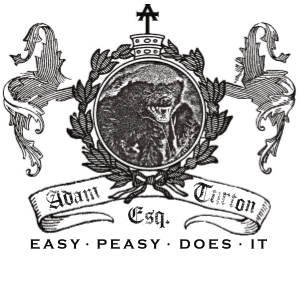skip to main |
skip to sidebar
The 1920s satnav ... and other weird and wonderful gadgets that never quite took off | Mail OnlineA 1920s satnav wristwatch is the one of the crazy contraptions in a new exhibition of Victorian and Edwardian inventions at the British Library.
Consumed - The Sole of a Worker - Ospop sneaker - NYTimes.com
A simple shoe popular among Chinese laborers gets a style makeover for the Western consumer.
Export Boom Helps Farms, but Not American Factories - NYTimes.com
A surge in U.S. commodity exports is a relief in an otherwise bleak economy, but it is an unreliable prop for an industrial power.
In Rural New York, Windmills Can Bring Whiff of Corruption - NYTimes.com
The wind industry has arrived in force in upstate New York, but some residents say the companies have brought with them an epidemic of corruption and intimidation.
Observatory - Razzle Dazzle Markings Can Confuse Predators - NYTimes.com
New research suggests that prey with dazzle markings were also difficult to catch, particularly when they moved at higher speeds.
Observatory - In Lake, Photosynthesis Relies on Arsenic - NYTimes.com
Researchers have discovered bacteria that use the toxic element arsenic in photosynthesis in the absence of oxygen.
Recalling a Mission to Capture the Depression’s Misery - ‘Documenting the Face of America’ - NYTimes.com
The PBS film “Documenting the Face of America” shows how a small federal agency’s New Deal project to document poverty helped shape modern documentary photography.
After Glory of a Lifetime, Asking ‘What Now?’ - NYTimes.com
Many athletes who surged to worldwide glory in Beijing will soon be engulfed by the fog known as ordinary life.
A Conversation With Nina V. Fedoroff - Nina Fedoroff, Advocate for Science Diplomacy - Interview - NYTimes.com
Nina V. Fedoroff is science adviser to the secretary of state and contends that genetically modified foods help the environment.
Researchers discover technology that silences genes
PhysOrg.com: Mount Sinai researchers have developed a new gene silencing technology that could be used to target genes that can lead to the development of certain diseases. This technology could pave the way for preventing diseases where gene dysfunction plays a role.
Novel fungus helps beetles to digest hard wood
PhysOrg.com: A little known fungus tucked away in the gut of Asian longhorned beetles helps the insect munch through the hardest of woods according to a team of entomologists and biochemists. Researchers say the discovery could lead to innovative methods of controlling the invasive pest, and potentially offer more efficient ways of breaking down plant biomass for generating biofuels.
Re-enact Bullitt With GPS Maps | Autopia from Wired.com
So you've driven to San Francisco in your 2008 Bullitt Edition Mustang. You have the Garmin plugged into the cigarette lighter, an iPod full of Lalo Schifrin and you're not
Injured? Horsing Around With Stem Cells May Get You Back in the Saddle
Read about the latest medical technology, pharmaceuticals and biotech trends including diets, drugs, genetics, stem cells, medicine, health, and cloning from Wired.com.
Antibodies Resurrected from 1918 Flu Pandemic That Killed 50 Million
The Daily Galaxy -News from Planet Earth & Beyond, is an eclectic text and video presentation of fascinating news and original insights on science, space exploration, technology, and their reflections in popular culture (film, books, events).
I Was There. Just Ask Photoshop. - NYTimes.com
As image-editing software grows in sophistication and ubiquity, alterations go far beyond removing red-eye and whitening teeth.
The Most Polluted City on Earth - thedailygreen.com
The truth about Linfen, China, the world's most polluted city.
Untitled Document
Dr. Doom - Profile - Nouriel Roubini - Predicting Crisis in the United States Economy - NYTimes.com
Two years ago, Nouriel Roubini predicted the current economic crisis. Now he sees things becoming far worse.

No comments:
Post a Comment